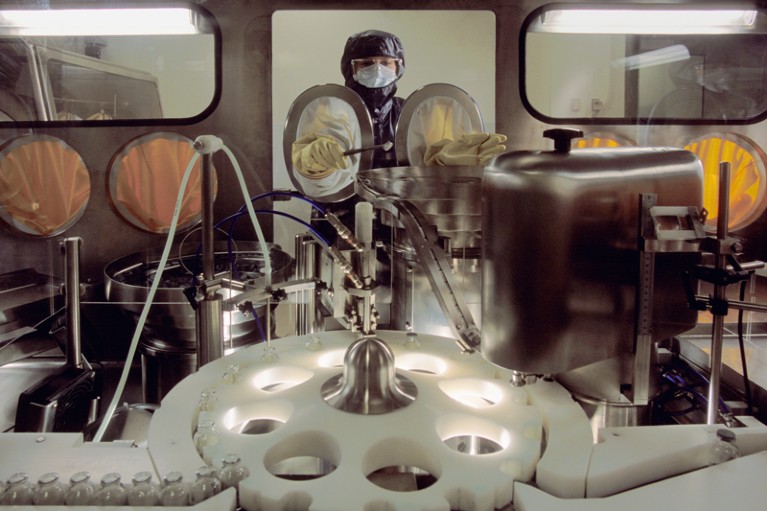
Smallpox remains a threat and there is now an effective treatment.Credit: Karen Kasmauski/Getty
Forty years ago, the UK city of Birmingham was in a panic. A medical photographer called Janet Parker was admitted to hospital on 11 August 1978, her body riddled with lesion and scars.
She passed away a month later, the last known person to die from one of the world’s deadliest diseases: smallpox. In 1980, the World Health Organization declared that the illness had been eradicated. So it might raise eyebrows that the US Food and Drug Administration (FDA) last month approved the first ever drug to treat it.
The antiviral, called TPOXX (tecovirimat) and made by SIGA Technologies of New York City, inhibits proteins in human cells that allow poxviruses to replicate and spread. TPOXX hasn’t actually been tested against smallpox in humans. Rather, the company trialled it in monkeys and rabbits infected with monkeypox and rabbitpox, respectively, and found that it allowed more than 90% of the animals to survive (D. W. Grosenbach et al. N. Engl. J. Med. 379, 44–53; 2018). This was enough for the FDA to approve it for human use, given that clinical trials of such a deadly killer are effectively impossible.
Another antiviral drug, called brincidofovir, isn’t far behind. In June, the FDA granted the drug’s developer, Chimerix of Durham, North Carolina, a fast-track review by designating it an orphan drug — a therapy for a disease with (all involved surely hope) a small market.
The approvals put the United States on track to fulfil criteria for bioweapons defence drafted in response to the 2001 anthrax attacks that killed five people. In 2009, the US Institute of Medicine recommended that the country stockpile smallpox vaccines and develop at least two antiviral drugs that attack the virus through different molecular mechanisms, to prevent the virus from becoming resistant.
Although it might seem like a waste of resources to develop cures for an extinct disease, smallpox resurgence does remain a realistic threat.
The variola virus that causes the disease officially exists in only two, highly secured places: the US Centers for Disease Control and Prevention (CDC) in Atlanta, Georgia, and its Russian counterpart, VECTOR near Novosibirsk. Every few years, the World Health Assembly debates whether to destroy these last two stocks, and each time, experts postpone the decision. Researchers still use them and, they say, that work should continue, given that we can never be certain the disease is dead.
While the reserves remain, some warn that a disgruntled employee could release the virus — which is what investigators think happened with the anthrax attacks. Or it could be spread through a lab accident. That’s what happened to Janet Parker, who worked directly above a university lab that studied the smallpox virus. Investigators later determined that although the researchers had protected themselves, the disease had drifted through air ducts.
The CDC and VECTOR are also unlikely to be the only possible sources. In 2014, the US National Institutes of Health (NIH) discovered live stocks in a storage room on its campus in Bethesda, Maryland. If the venerable and highly regulated NIH could lose track of smallpox, other institutions could have some forgotten vials as well. Even more worrying is the prospect that the virus lives on in freezers in former Soviet states, as US intelligence experts fear, and in countries with illicit bioweapons programmes.
Smallpox might also lie dormant in mummies and corpses of people who died from the disease. As the Arctic permafrost melts, accidental encounters with previously frozen diseases could become more common.
The greatest threat is advances in synthetic biology, which could permit a rogue lab to re-engineer a smallpox virus. In 2016, researchers in Canada announced that they had created horsepox using pieces of DNA ordered from companies. A synthetic smallpox virus could be even more dangerous than the original, because it could be designed to spread more easily or with ways to survive new therapies.
The eradication of smallpox remains one of humanity’s most impressive achievements, one that has saved innumerable lives. But it has also left people unvaccinated and vulnerable. New therapies and continued funding for national vaccine stockpiles serve as a crucial insurance policy — just in case.

 Ominous biosecurity trends under Putin
Ominous biosecurity trends under Putin
 US government lifts ban on risky pathogen research
US government lifts ban on risky pathogen research


